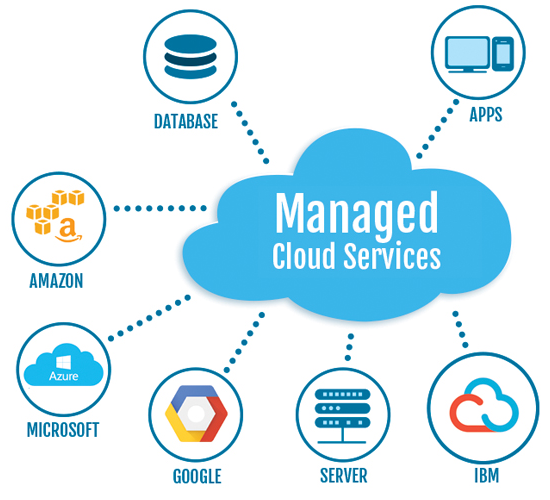Achieve Seamless Scalability With Cloud Services
In the ever-evolving landscape of cloud solutions, accomplishing seamless scalability stands as a cornerstone for contemporary companies seeking to stay versatile and affordable. The ability to effortlessly expand or contract sources in response to changing demands is a critical benefit in today's fast-paced digital atmosphere. By mastering the art of scalable cloud services, companies can not just maximize performance and streamline operations yet also pave the means for future growth and innovation. The pursuit for smooth scalability with cloud services unveils a globe of opportunities for those happy to embrace the transformative power of vibrant resource management.
Benefits of Cloud Scalability
Cloud scalability provides organizations the adaptability to dynamically change resources based on demand, making certain optimum performance and expense performance. One crucial benefit is the capacity to range resources up or down swiftly in feedback to varying workloads. This dexterity enables businesses to fulfill altering client demands without over-provisioning resources, ultimately bring about cost savings. Scalability also improves performance by ensuring that systems can handle enhanced web traffic or work without experiencing downtime or stagnations. By successfully designating sources, organizations can keep high levels of performance during peak times without unneeded costs during quieter periods. Furthermore, cloud scalability advertises development and testing by enabling businesses to conveniently test originalities and range them as needed. This flexibility motivates a society of continual enhancement and adaptation, allowing organizations to remain affordable in a swiftly developing market landscape. Ultimately, the advantages of cloud scalability expand past cost financial savings to incorporate enhanced performance, dexterity, and advancement.
Secret Attributes for Scaling
Efficient scaling in cloud solutions counts on crucial attributes that enable companies to adjust resources dynamically based on need. One necessary attribute for scaling is flexibility, enabling sources to scale up or down in response to rising and fall workloads. This ensures that organizations can meet performance needs without over-provisioning resources. Another essential feature is scalability, allowing systems to handle enhanced workload by including sources seamlessly. This feature is important for accommodating development without jeopardizing performance. Furthermore, automation plays an important function in scaling by automating the provisioning and de-provisioning of resources based upon predefined plans. Automation reduces human treatment, improves effectiveness, and ensures fast action to transforming needs. Monitoring and analytics devices are also crucial for scaling, offering understandings right into resource utilization, performance metrics, and possible traffic jams. These tools allow companies to optimize and make educated choices resource allotment for reliable scaling. Generally, these essential functions collectively equip companies to attain smooth scalability in cloud solutions.
Implementing Auto-Scaling Approaches
To properly enhance resource allowance and adapt to differing workloads, companies need to purposefully carry out auto-scaling methods in their cloud services framework. Auto-scaling permits systems to instantly readjust the variety of compute sources based upon real-time need. There are various auto-scaling strategies that companies can use, such as predictive scaling, which uses historic data to forecast future resource requirements, and reactive scaling, which replies to current work modifications.

Finest Practices for Scalability
For companies aiming to improve their scalability in cloud solutions, implementing best practices is critical for optimum performance and source administration. One trick best practice is making applications with a microservices architecture. This strategy breaks down applications into smaller, independent solutions that can be released, upgraded, and scaled independently, enabling higher versatility and scalability.
An additional vital method is using containerization innovation, such as Docker or Kubernetes. Containers allow the packaging of applications and their reliances right into isolated units, making it much easier to scale elements separately and deploy check my site them regularly throughout various settings.
In addition, implementing automated implementation and infrastructure as code (IaC) can improve scalability initiatives (linkdaddy cloud services). Automation devices like Terraform or Ansible aid in provisioning and handling resources efficiently, decreasing manual mistakes and allowing rapid scalability
Additionally, keeping track of performance metrics, establishing up signals, and carrying out regular ability planning are necessary techniques to guarantee positive scalability administration. By sticking to these ideal techniques, organizations can accomplish seamless scalability in their cloud services while maximizing efficiency and source application.
Tracking Efficiency Metrics
When assessing the efficiency of cloud services scalability, very closely checking efficiency metrics is important for making sure optimal functionality and resource allocation. By continuously tracking essential efficiency signs (KPIs) such as reaction times, source, throughput, and latency application, organizations can obtain important understandings right into the wellness and efficiency of their cloud infrastructure. Checking performance metrics permits the early discovery of prospective bottlenecks or concerns that might influence scalability, making it possible for proactive actions to be taken to resolve them before they escalate.

Conclusion
In verdict, achieving smooth scalability with cloud services is vital for companies to enhance performance, boost development, and keep high performance degrees throughout peak times. By leveraging the benefits of cloud scalability, executing auto-scaling techniques, using key features such as flexibility and automation, and complying with ideal techniques like application layout and efficiency surveillance, companies can effectively scale their systems while maximizing resource application and performance.
The quest for seamless scalability with cloud services reveals a world of opportunities for those willing to embrace the transformative power of vibrant resource monitoring.
Cloud scalability provides organizations the adaptability to dynamically adjust sources based on demand, ensuring optimum efficiency and cost effectiveness. An additional vital function is scalability, allowing systems to take care of raised work by including sources seamlessly.For companies aiming to enhance their scalability in cloud services, applying best methods is vital for optimal efficiency and source management.When examining the effectiveness of cloud services scalability, closely checking performance Our site metrics is important for making sure ideal performance and source appropriation.